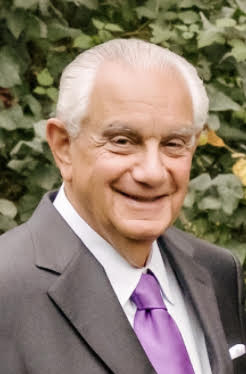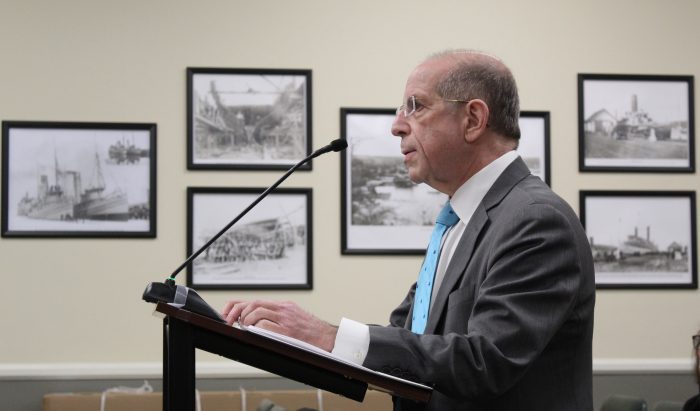The following is a press release from the campaign of Rebecca Kassay.
Rebecca Kassay, a dedicated community organizer, elected official and entrepreneur has declared her candidacy for the New York State Assembly in the November 2024 electoral cycle. With a proven track record of impactful community engagement, Kassay steps up to represent the communities of Assembly District 4 at the state level.
Kassay dove into local community service as an intern-turned-program director at Avalon Park and Preserve in Stony Brook. Beginning in 2011, she created and directed a youth environmental volunteer program, connecting hundreds of Suffolk County teens with dozens of nonprofits, municipal branches and stewardship projects throughout Long Island.
Kassay and the teens tackled volunteer efforts such as native habitat restoration, species surveys, organic gardening, beach cleanups, trail maintenance and educational signage creation.
Over the course of seven years, she built upon her aptitude and passion for empowering young stewards with practicable, tangible ways to make a difference in their communities. The program was awarded the Robert Cushman Murphy Memorial Award by Three Village Historical Society and recognized by the Brookhaven Youth Bureau.
In 2013, Kassay purchased and restored a historic Victorian home on Main Street in Port Jefferson with her husband, Andrew Thomas. A year later, they opened the doors of The Fox and Owl Inn bed-and-breakfast.
As the inn’s proprietor, Kassay has hosted countless tourists drawn in by the area’s rich history and natural beauty, as well as the family, friends and visitors of local residents and institutions for over nine years. On behalf of her small business, she is a proud and active member of the Rotary Club of Port Jefferson and Greater Port Jefferson Chamber of Commerce.
“I am a devoted member of the vast, dynamic community of folks who want to maintain and improve quality of life throughout and beyond the district,” Kassay said. “I am in constant awe at the individuals and groups who consistently advocate for solutions to their concerns and further their worthy goals. By uniting over shared interests and intentions, we as neighbors overcome our differences and rebuild the community’s strength. It will be my greatest honor to represent and support these voices in state-level conversations as well as local actions.”
In 2019, Kassay took her commitment to community action to new heights by creating and filming a documentary series titled “Be The Change with Rebecca.” This immersive series, currently in post-production, adopts a “Dirty Jobs with Mike Rowe”-style approach to showcase the power of volunteerism and inspire others to roll up their sleeves to get involved. This experience further deepened Kassay’s understanding of community issues and the importance of both grassroots efforts and government response.
When the COVID-19 pandemic struck, Kassay mobilized her community network and organizational skills to establish and lead a pop-up initiative, Long Island Open Source Medical Supplies. In under three months, a core team of volunteer administrators and hundreds of Long Islanders created, donated and delivered over 40,000 pieces of lifesaving, spirit-lifting homemade personal protective equipment and comfort care items to local essential workers and patients at hundreds of medical facilities, institutions and businesses.
In collaboration with Suffolk County Police Asian Jade Society, Amo Long Island, local Scout troops and many others, LIOSMS also organized a food drive, collecting 2,500 items to stock local food pantries. LIOSMS was recognized with Suffolk County’s 2020 Operation HOPE COVID-19 Responder Award.
Kassay is a SUNY New Paltz graduate with a major in environmental studies and a minor in communications and media. Her community work was recognized by her alma mater with a 40 Under 40 Award in 2017, and she has since returned as a panelist at conferences such as the SUNY New Paltz Women’s Leadership Summit.
Kassay has served as an elected Port Jefferson Village trustee since 2020, and now serves as the village’s deputy mayor. Her consistent incorporation of climate resilience strategies, transit-oriented development practices and heightened community involvement into village conversations has demonstrated her dedication to creating a sustainable, harmonious future.
She has led successful initiatives to establish a community garden on Beach Street; plan for the revitalization of village parkland; install beach cleanup stations along village waterfront; establish a resident election task force to research term lengths and limits; and form intermunicipal relationships to increase the efficiency and effectiveness of government.
“I’m running for the New York State Assembly because we need leaders who understand that governance which truly reflects the voices, needs and concerns of their constituents starts with listening,” Kassay said. “In the village government, there are no national political party affiliations. I am practiced in working with anybody who is interested in pursuing commonsense, balanced solutions to ongoing challenges.”
Rebecca Kassay’s candidacy represents a continuation of her lifelong commitment to fostering community connections, proactively confronting concerns and advocating for a sustainable and resilient future. Kassay will officially launch her campaign at an event early in the new year.
“I look forward to continuing conversations with new and familiar community partners and rising to serve at the state level, where I can work further for the well-being of my constituents and all fellow New Yorkers.”
For more information or to contact the campaign, email [email protected].

















